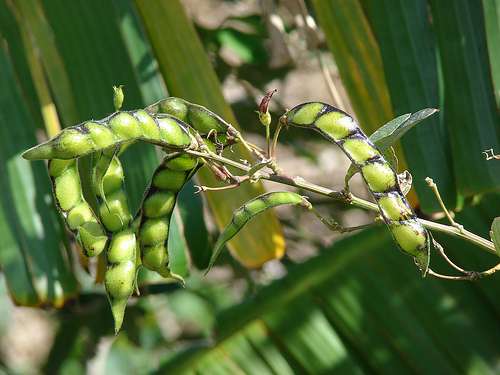Wild relatives vital to crop improvement

Wild relatives of the nutritious pigeonpea (Cajanus cajan (L.) Millsp.) legume should be more actively collected and conserved as a genetic resource for improving crop yields, research suggests.
The pigeonpea—a food crop grown across Asia, Southern and Eastern Africa, Latin America and the Caribbean—is relatively easy to grow, drought-tolerant, and its growth adds essential nitrogen to the soil.
It's also very versatile: its seeds can be eaten fresh or dried, its foliage feeds livestock and its woody stems provide fuel and construction materials.
But University of Western Australia Institute of Agriculture Adjunct Professor Hari Upadhyaya says there is much room for improvement.
"Pigeonpea is susceptible to diseases and insect pests, and its yields are very poor," he says.
"In India, for example, for 40 years we've been achieving average yields of about 800 kilograms per hectare, but you can get three tonnes per hectare on some well-managed farms.
"We want to increase the average yield to one tonne, or to one-and-a-half tonnes per hectare."
The key to this improvement, says Dr Upadhyaya, lies in the genetic wealth of pigeonpea's many wild relatives.
"Wild relatives can have a high level of resistance to diseases and insect pests…they can have traits not available in cultivated types," he says.
Wild species have already been used to develop hybrid pigeonpeas.
"Some wild lines also contain higher levels of protein [more than 30 per cent]," Dr Upadhyaya says.
"Through plant breeding you could enhance the protein content of cultivated lines using wild species."
Ongoing collection is vital
To assess which of pigeonpea's wild relatives might be most useful to plant breeders, Dr Upadhyaya's team recently analysed the traits and distributions of 15 wild pigeonpea species, accessing more than 3,000 records from herbariums and gene banks around the world.
Their analysis pinpoints 12 of the 15 wild species as a high priority for further collection, identifying 20 countries or regions—including northern Australia—as hotspots where further collection is vital.
"Our knowledge of these wild species is very, very low," Dr Upadhyaya says.
"Some of the wild species are threatened by developmental projects, or occur in habitat that's not easy to get to. They occur in forests, on roadsides..."
Dr Upadhyaya says there are still places from which collection has never taken place, and environmental pressures mean many species are at risk.
"It's incredibly important to collect, conserve and make available these wild species to the global research community," he says.
More information: "Distributions, ex situ conservation status, and potential genetic resources for abiotic stress tolerance," Biological Conservation, Volume 184, April 2015, Pages 259-270, ISSN 0006-3207, dx.doi.org/10.1016/j.biocon.2015.01.032.
Journal information: Biological Conservation
Provided by Science Network WA















